Cn-down > Domestic news > News content
2023-09-10 来源:金绒 浏览量:1061
Summary
In the 37th week of 2023 (9.4-9.10), the market is generally stable, with gray duck down falling slightly.
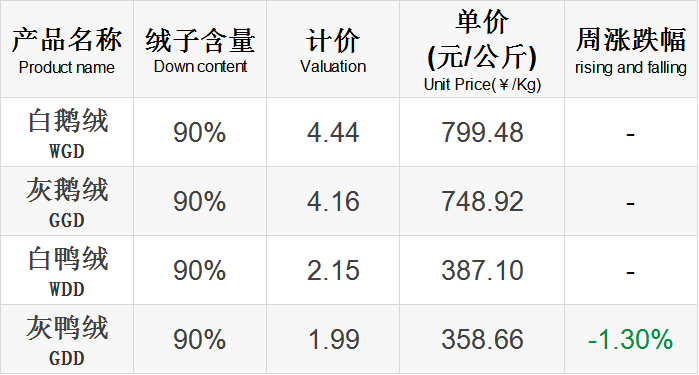
Counting August, China's exports and imports have declined for four consecutive months. The latest report from the U.S. Census Bureau shows that China's share of U.S. imports of goods in the past 12 months has dropped to its lowest level since 2006. However, as the United States briefly extended tariff exemptions for some Chinese products, Sino-US trade may change again.
September is the core period in the peak season for finished cashmere sales, but this year the peak season is not busy due to the severe macroeconomic situation. The price increase of white duck down caused by the lack of upstream raw materials is still difficult to transmit to the downstream, thus compressing the profit margins of down companies. Regarding the current market situation, most companies in the industry are cautious.
After the Zhongyuan Festival, the number of ducks in stock dropped sharply, and the price of ducklings also increased due to tight supply. At present, while the raw material wool of gray duck is increasing, the demand for gray velvet from sports brands has also ended, causing the price of gray duck down to fall.
Good news this week
On the 6th local time, the Office of the United States Trade Representative (USTR) announced that 352 items imported from China that were exempted from additional tariffs in December 2022 will continue to extend their "Section 301" tariff exemption period.These exemptions were originally scheduled to expire on September 30 and are now valid until December 31, 2023.
The Office of the U.S. Trade Representative added in a statement that the extension of the tariff exemption until the end of the year will allow the government to conduct additional review on whether to continue to retain the exemption according to the statutory four-year review period.。

Previously, U.S. Commerce Secretary Raimondo predicted that the Biden administration would not make any changes to the tariff policy against China during the Trump administration.She also claimed that former President Trump's tariffs "could have been more strategic."
In October 2021, U.S. Trade Representative Dai Qi announced that it planned to re-exempt 549 Chinese imported goods from tariffs, but in the end only 352 of the 549 Chinese imported goods were confirmed. These include three products: "feather filling", "down filling" and "cotton pillows filled with duck down or goose down".
|
税号及产品描述 |
|
美国税号:
Feathers(Meeting both test standards 4 and 10.1 of Federal Standard 148a promulgated by the General Services Administration)
羽毛(符合总务管理局颁布的联邦标准148a第4和10.1条的试验标准) |
|
美国税号:
Down(Meeting both test standards 4 and 10.1 of Federal Standard 148a promulgated by the General Services Administration)
羽绒(符合总务管理局颁布的联邦标准148a第4和10.1条的试验标准) |
|
美国税号: Pillow shells of cotton, each filled with goose or duck down
填充鸭绒或鹅绒的棉质枕头 |
In addition, among the 549 imported commodities that are not included in the 352 exemption lists, there is still 0505.10.0060 goose and duck feathers for filling (cleaned, disinfected or preserved without further processing).
source |
美国贸易代表办公室
According to news from the General Administration of Customs on September 7, calculated in RMB (the same below), in the first eight months of this year, our country’s total import and export value was 27.08 trillion yuan, a slight decrease of 0.1% year-on-year. Among them, exports were 15.47 trillion yuan, an increase of 0.8%; imports were 11.61 trillion yuan, a decrease of 1.3%; the trade surplus was 3.86 trillion yuan, an increase of 7.3%.
In August this year, our country's import and export reached 3.59 trillion yuan, a year-on-year decrease of 2.5% and a month-on-month increase of 3.9%. Among them, exports were 2.04 trillion yuan, down 3.2% year-on-year; imports were 1.55 trillion yuan, down 1.6% year-on-year; the trade surplus was 488 billion yuan, narrowing by 8.2%. Although negative growth continued, imports and exports in August were better than expected.
Lu Daliang, director of the Statistical Analysis Department of the General Administration of Customs, analyzed that in the first eight months of this year, our country's imports and exports were basically the same year-on-year. In August, the import and export scale was nearly 3.6 trillion yuan, an increase of 8.2% compared with the average of the same period from 2020 to 2022.This scale is the second highest point in terms of this year’s monthly data and the historical data of the same period. our country’s foreign trade is generally stable.
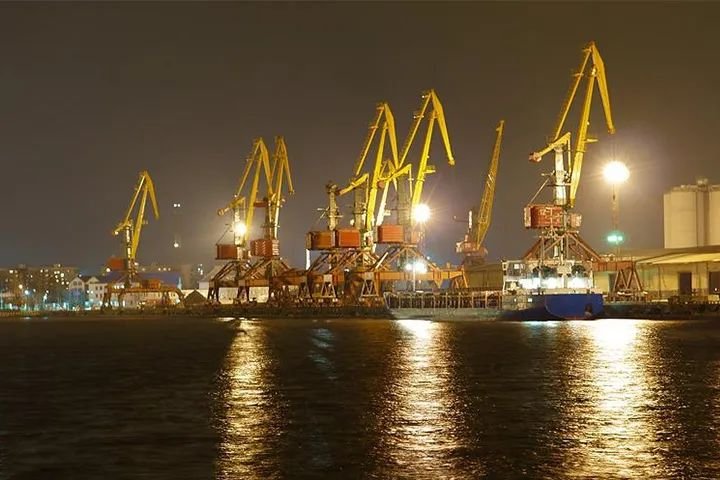
Dong Qi, chief macro analyst of Guotai Junan Securities, pointed out that from the perspective of comparable countries, South Korea's exports fell by 8.4% year-on-year in August, and Vietnam's exports fell by 7.6%.The domestic PMI new export orders index continues to be below the boom and bust line and is weaker than seasonal.Taking various factors together, it shows that export momentum in August was weak.
It is worth noting that in terms of US dollars, in August, our country's top three export markets were the United States, the Association of Southeast Asian Nations and the European Union. Among them, exports to the United States fell by 9.5% year-on-year, exports to ASEAN fell by 13.3%, and exports to the EU fell by 19.6% year-on-year.
In August, our country's textile and apparel exports to the world were 199.31 billion yuan, a year-on-year decrease of 4.6% and a month-on-month increase of 2.7%.Among them, textile exports were 83.65 billion yuan, a year-on-year decrease of 0.7%, and a month-on-month increase of 4.9%; clothing exports were 115.66 billion yuan, a year-on-year decrease of 7.3%, and a month-on-month increase of 1.3%.
source |
金绒采编自海关总署、界面新闻
After the market officially entered the "Golden Nine", the atmosphere has been significantly boosted, and the foreign trade market, which has been tepid, has also improved.Of course, September, as a transitional month to the peak season, is mostly filled with customers’ sample making, order inquiries and price inquiries. Therefore, textile workers have not complained about the lack of actual orders and have maintained a relatively cautious attitude.
The person in charge of a textile company that mainly sells down jacket fabrics said: "Our orders are currently in a stable state. Although there are no big orders, we can maintain operations. I believe the market will get better in the future. "
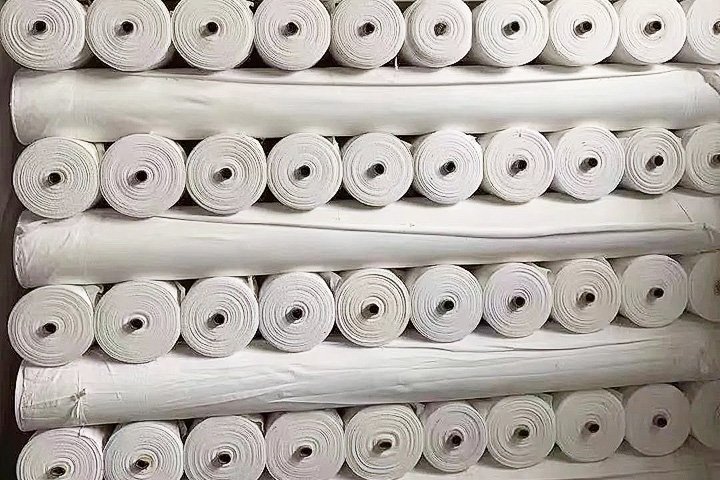
The person in charge of another textile company mainly engaged in Russian exports said: "Orders have already increased compared to August. We will see the customer response in the future. I believe that as long as we make good products, customers will definitely place large orders. "
A textile company said that the recent sales of pongee and four-way stretch products have been quite good, and the volume of a single order can reach more than 10,000 meters. However, most of them are stocked by traders in advance, so the real demand must not have come yet.
As an extremely conventional variety, the price of gall cloth has been difficult to improve. However, the market seems to be a little abnormal recently, and the price of gall cloth has actually increased!As the temperature drops, the number of gallbladders in the market has increased significantly. Moreover, although the shopping festival is still early, the stocking of down jackets has begun.
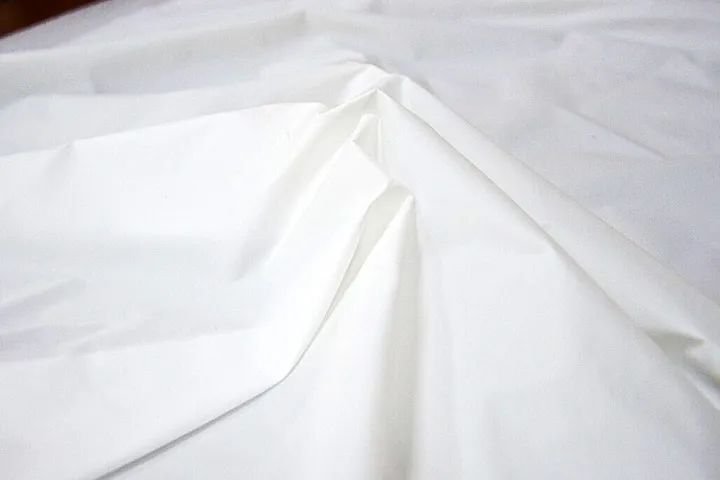
Supermarket of gall bladder for down garments mostly targets some market orders in the domestic market and has the characteristics of large quantity, low price, fast delivery and explosive orders.Therefore, the orders and prices of Supermarket of cloth for filling down are closer to the overall market conditions and can better represent the domestic clothing order situation.
Nowadays, there is a capital increase in the price of gall bladder for down garments, which also shows that the overall market is developing for the better, and the improvement of the clothing terminal is the final means to truly solve the order difficulty for the textile market.
source |
布工厂
According to data from the National Bureau of Statistics, from January to July, the total retail sales of clothing, shoes, hats, and knitted textiles increased by 11.4% year-on-year, far exceeding the social retail growth rate (5.9%).In addition, the increase in business commuting and outdoor activity scenes has driven the men's clothing category to accelerate recovery, and its performance is better than that of the industry as a whole.
Among them, the self-owned IP of "GXG Youth Down Manufacturing Bureau" founded by Mulsanne Group has been well received by the market.At present, this IP has entered the 3.0 era, breaking through the boundaries and temperature limitations of down scenes, providing consumers with a lightweight and fashionable choice.

Recently, GXG officially announced Gong Jun as the global brand spokesperson, taking a new step on the road of focusing on "young casual men's clothing more suitable for commuting".The "Zero Pressure Series" launched after the strategic upgrade specializes in using technical fabrics that are easy to care for, lightweight and have high anti-fouling and anti-wrinkle properties to create "Zero Pressure Down" products.
It is worth noting that GXG previously revealed that its cooperation with Focus Media has big plans, which will detonate the entire Chinese office buildings and communities dominated by young people during the autumn and winter new product launches, helping GXG realize its expansion from apartment buildings, office buildings, shopping malls, and cinemas.Consumers are reached in all scenarios and with full coverage. Judging from the investment scale, GXG is expected to reach 100 million. This is GXG’s biggest move since its founding.
source |
格隆汇、中网资讯
Bad news this week
The first month of the third quarter is generally the period when exports peak in the second half of the year, and the export performance in the third quarter has important indicator significance for the whole year.However, textile and apparel exports lacked growth momentum in July this year. After May and June, they fell by double digits for the third consecutive month, and the decline further expanded to 18.3%.
The primary reason for the decline is still insufficient external demand. Judging from the import situation of the United States, the European Union and Japan, textile and apparel dropped by 23.6%, 13.5% and 3.5% respectively in the first half of the year. Secondly, the typhoons that hit our country in July caused some companies to suspend production and ports, causing some orders to be unable to be delivered on time.
The export of down clothing also experienced an extremely obvious decline in July, with export volume falling by 31% year-on-year. Among them, 1.93 million pieces were exported to the EU, down 54% year-on-year; 1.06 million pieces were exported to the United States, down 36% year-on-year; 220,000 pieces were exported to South Korea, down 22% year-on-year.
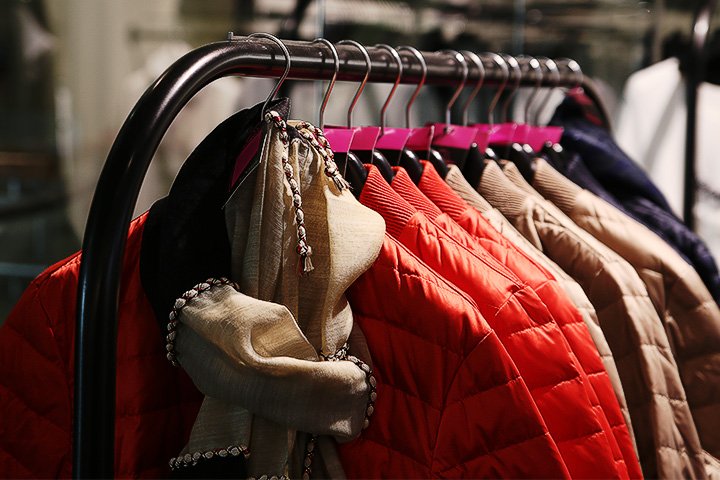
July-August is likely to be the "darkest moment" for textile and apparel exports this year, and some positive factors are expected to emerge after that.
First, the U.S. economy is still resilient in the near future, the inflation rate continues to decline, and inventories are declining year-on-year, which has formed good expectations for China's exports. The United States is still China's largest single market, and its recovery plays an important leading role in global trade in terminal products and intermediate goods.
Second, the year-on-year base number gradually declined. Except for August, which was still high last year, exports shrank to less than US$30 billion from September to December, with negative year-on-year growth in each month, and the decline expanded month by month. The cumulative growth in the third quarter was 5.6%, and the cumulative decline in the fourth quarter was 14.6%. Leave room for a rebound in exports in the fourth quarter of this year.
The export of down jackets in July also had bright spots. For example, the year-on-year growth for Japan was 41%, the year-on-year growth for Russia was 65%, and especially for Mexico, the year-on-year growth was 351%.
source |
金绒采编自中国纺织品进出口商会、海关数据
From June to August 2023, the northern hemisphere experienced the hottest summer in history, while the southern hemisphere experienced a rare warm winter. Australia, Antarctica and some South American countries experienced well above average temperatures.
According to data provided by the European Union's climate monitoring agency, the Copernicus Climate Change Service, June-August 2023 was the hottest period globally since the agency's records began in 1940.The global average temperature is 16.77 degrees Celsius, 0.66 degrees Celsius higher than the average for the same period in previous years.
The latest data from the agency shows that following the hottest June and July on record, global temperatures in August this year also hit a record high.The global average temperature reached 16.82 degrees Celsius that month, 0.31 degrees Celsius higher than the original record set in 2016.

Regarding these data, United Nations Secretary-General Guterres said: "Our planet has just experienced a sultry season, and climate breakdown has begun. "
In addition, the temperature of sea water continues to be high. The highest sea surface temperature usually falls around March every year, but a rare situation occurred in August this year. The average sea water temperature soared to 20.98 degrees Celsius, the highest so far.
World Meteorological Organization Secretary-General Pietri Taalas reminded in a statement that the current high temperatures occurred "before El Niño has a global warming impact." Scientists predict that the most severe effects of El Niño will be felt by the end of this year and into next year.
source |
澎湃新闻、新华社、财联社
Market news situation
This week’s news is more positive than negative.
On the 6th, the United States extended the Section 301 tariff exemption period for 352 items of Chinese imported goods, and further decisions can be made based on the four-year first review regulations.Some experts said that these exempted products are products that the United States has evaluated as more in line with its own interests, and may be products that will increase imports before the end of the year, and they include down and products.
Although imports and exports continued to show negative growth in August, they were both better than expected. Overall, the year-on-year decline has narrowed significantly, the month-on-month decline has rebounded significantly, and foreign trade has shown signs of improvement. Looking forward to the future, the downward momentum of overseas economies has eased, and the export growth base in the same period last year continued to decline. Next, the year-on-year decline in my country's export volume is expected to continue to narrow.
The National Climate Center predicts that a moderately strong eastern-type El Niño event will form this fall, with the peak likely to occur between October and December this year. The El Niño phenomenon will affect my country's winter wind direction and wind speed, thereby reducing the frequency and intensity of cold waves. Therefore, many of the past El Niño years have actually been warm winters.
 热门排行
中国三大羽绒生产基地之—广东吴川
全球最奢侈羽绒服排行
一件羽绒服需要多少只鸭子的羽绒?
2017羽绒原料价格一路上涨,究竟为何?
飞丝是什么?能代替羽绒?别被骗了,三种方法让你告别假羽绒服!
你的羽绒服为什么钻绒?涨知识了
羽绒被的价格一般是多少 通过成本看羽绒被价格
中国羽绒服四大品牌调查:到底谁才是最强王者?
羽绒金网:羽毛、羽绒、毛绒计价
《羽绒羽毛》、《羽绒羽毛检验方法》新版标准发布,2017年7月1日实施
热门排行
中国三大羽绒生产基地之—广东吴川
全球最奢侈羽绒服排行
一件羽绒服需要多少只鸭子的羽绒?
2017羽绒原料价格一路上涨,究竟为何?
飞丝是什么?能代替羽绒?别被骗了,三种方法让你告别假羽绒服!
你的羽绒服为什么钻绒?涨知识了
羽绒被的价格一般是多少 通过成本看羽绒被价格
中国羽绒服四大品牌调查:到底谁才是最强王者?
羽绒金网:羽毛、羽绒、毛绒计价
《羽绒羽毛》、《羽绒羽毛检验方法》新版标准发布,2017年7月1日实施
 推荐阅读
“吴川力量”助中国羽绒接轨世界
中国三大羽绒生产基地之—广东吴川
中羽协第二期新国标培训班 在“羽绒之乡”广东吴川成功举办
羽绒之乡:贵港桥圩镇将打造旅游休闲特色小镇
广西贵港桥圩镇:打造中国羽绒休闲旅游特色小镇
羽绒金网:羽毛、羽绒、毛绒计价
羽绒别急着收 中央气象台发布寒潮蓝色预警 部分地区降温超12℃
上海消保委检测 千元鹅绒被用鸭毛绒填充
冻哭丨降温10℃!鸡年首个寒潮预警来袭,你准备好了吗?
传统羽绒产业如何实现转型升级?四川玉泉镇产业集群发展
推荐阅读
“吴川力量”助中国羽绒接轨世界
中国三大羽绒生产基地之—广东吴川
中羽协第二期新国标培训班 在“羽绒之乡”广东吴川成功举办
羽绒之乡:贵港桥圩镇将打造旅游休闲特色小镇
广西贵港桥圩镇:打造中国羽绒休闲旅游特色小镇
羽绒金网:羽毛、羽绒、毛绒计价
羽绒别急着收 中央气象台发布寒潮蓝色预警 部分地区降温超12℃
上海消保委检测 千元鹅绒被用鸭毛绒填充
冻哭丨降温10℃!鸡年首个寒潮预警来袭,你准备好了吗?
传统羽绒产业如何实现转型升级?四川玉泉镇产业集群发展